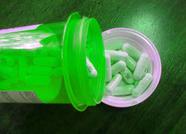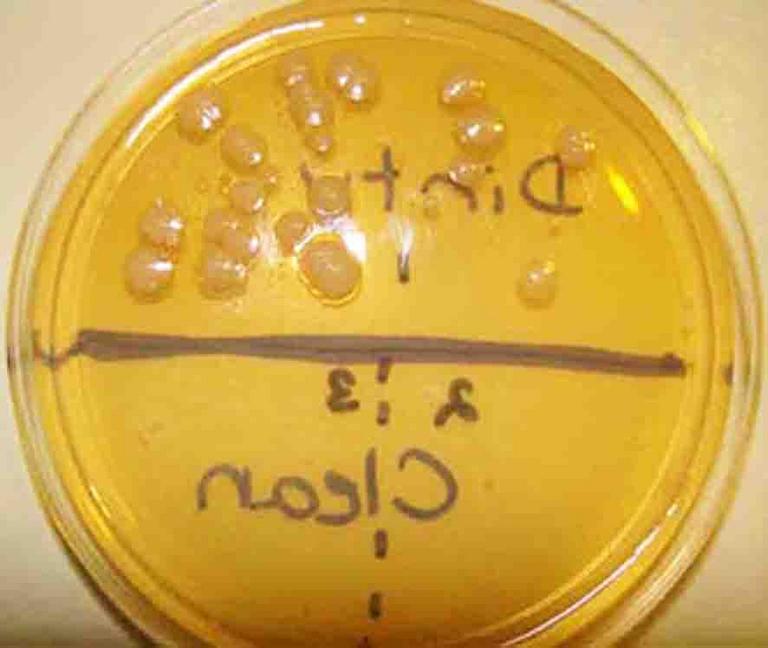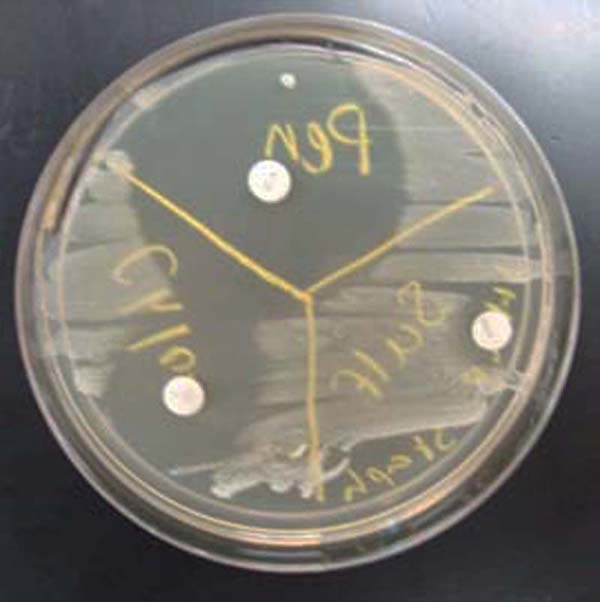 | ||||
Mode of Action of Quinolone Antibiotics
Class Notes from Science Prof Online
There are many different classes of antibiotics
each exerting a different type of inhibitory effect that specifically impacts bacteria. Bacterial cells are prokaryotic; primitive cells that differ significantly from humans’ eukaryotic cells.
Quinolones exert their bacteriocidal effect by interfering with a bacterium’s ability to make DNA (replication).
Article Summary: Antibiotics are chemotherapeutic agents used to inhibit or kill bacteria. But how do quinolones destroy these microbes without hurting our cells?
MOA of Quinolone Antibiotics
 | ||||
You have free access to a large collection of materials used in a college-level introductory microbiology course. The Virtual Microbiology Classroom provides a wide range of free educational resources including PowerPoint Lectures, Study Guides, Review Questions and Practice Test Questions.
Page last updated: 5/2014
SPO VIRTUAL CLASSROOMS
 | ||||||
SPO is a FREE science education website. Donations are key in helping us provide this resource with fewer ads.
Please help!
(This donation link uses PayPal on a secure connection.)
Many quinolone antibiotics belong to a subgroup called fluoroquinolones, which have a fluoro functional group associated with the molecule. Both terms are therefore used to describe antibiotics in this class.
Each article in this series covers a specific class of antibiotic and includes the following information:
 | ||||||
HOME MICROBIOLOGY EXPERIMENT FROM SPO
TSY agar with sample from dirty dishes on top (note bacterial colonies that grew), and sample from cleaned dishes on bottom.
Sources & Resources
- Bauman, R. (2014) Microbiology with Diseases by Taxonomy. Pearson Benjamin Cummings.
- Park Talaro, K (2008) Foundations in Microbiology, McGraw Hill.
- Oliphant & Green (2002) Quinolones: A Comprehensive Review, Journal American Family Physician
- Microbiology In the Home: Tips To Sanitize Your House and Keep Your Family Healthy, Household Microbiology article from Science Prof Online.
- Microbial Control Laboratory Exercise Main Page from the Virtual Microbiology Classroom.
- a list of the specific antibiotics that fall in the class (generic and brand names)
- mode of action
- type of infection the antibiotic class to against
- type of bacteria inhibited or killed
- pros and cons of using the class of antibiotics
Main Classes of Antibiotics
- Cephalosporins (a Beta-lactam)
- Penicillin (a Beta-lactam)
- Quinolones (Fluoroquinolones)
- Sulfonamides (Sulfa Drugs)
Quinolone Antibiotics
- 1st generation: cinoxacin nalidixic acid (NegGam, Wintomylon); pipemidic acid (Dolcol)
- 2nd generation: ciprofloxacin (Ciprobay, Cipro, Ciproxin); norfloxacin (Lexinor, Noroxin, Quinabic, Janacin); ofloxacin (Floxin, Oxaldin, Tarivid)
- 3rd generation: levofloxacin (Cravit, Levaquin); sparfloxacin (Zagam); tosufloxacin
- 4th generation: clinafloxacin; gemifloxacin (Factive); moxifloxacin (Avelox,Vigamox); gatifloxacin (Zymar)
Mode of Action of Quinolones
Quinolones are bacteriocidal drugs, meaning that they kill bacteria. These antibiotic drugs inhibit the bacterial DNA gyrase enzyme which is necessary for DNA replication. Since a copy of DNA must be made each time a cell divides, interfering with replication makes it difficult for bacteria to multiply.
How DNA is packaged is very different in bacteria as opposed to eukaryotes. Bacteria supercoil DNA using DNA gyrase, whereas eukaryotes coil DNA around histone proteins. Because quinolones specifically target DNA gyrase, they do not interfere with human DNA.
Antimicrobial Spectrum of Quinolones
Quinolones are known as broad-spectrum antibiotics, effective against many different types of bacteria, both Gram-positive (Gram +) and Gram-negative (Gram -).
Type of Infections Quinolones are Used Against
Clinical applications of quinolones include the treatment of common urinary tract infections, and certain gastrointestinal infections, gynecological infections / STDs, skin infections, and upper and lower respiratory infections (such as sinusitis, pneumonia, bronchitis).
Adverse Effects of Quinolones
Quinolones typically have few side effects, most commonly including nausea, headache, dizziness, and confusion. Rare but serious adverse events have been reported, such as prolongation of the corrected QT interval, phototoxicity, liver enzyme abnormalities, arthropathy (joint problems), as well as cartilage and tendon abnormalities.
Antibiotic Resistance
Resistance to quinolones can develop very quickly, even during a course of treatment. The newer quinolones are rarely used as first-line agents, since overuse and inappropriate use of this class of antibiotic is likely to worsen current problems with antibiotic resistance. A variety of pathogens, including
Staphylococcus aureus (pathogenic Staph), Enterococci, and Streptococcus pyogenes (the causative agent of strep throat) now exhibit resistance.
* The information in this article is not meant to be used for self-diagnosis or treatment of illness. If you are sick, seek help from a trained medical professional, not a computer.
TSY agar inoculated with Staphylococcus. Three antibiotic sensitivity disks appear on this medium: penicillin, sulfa, and ciprofloxacin (clockwise from top). Note the "zone of inhibition" around each antibiotic disk. The larger the zone of bacterial inhibition, the more effective the antibiotic is against the bacteria.
Essential structure of all quinolone antibiotics: the blue drawn remainder of R is usually piperazine; if the connection contains fluorine (red), it is a fluoroquinolone.






